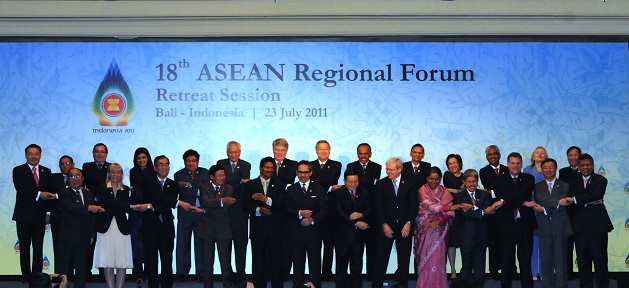ASEAN, Indonesia Aiming to Establish Historic Economic Community by 2015

Further integration as part of the proposed ASEAN Economic Community (AEC), set to be launched in 2015, will mean that the grouping, already home to some of the world’s fastest-growing economies, mayexperience stronger economic growth in the future if the AEC is successfully implemented.
Background
At the recent World Economic Forum in Manila, Indonesia’s new chief economics minister, Chairul Tanjung, confirmed that ASEAN was on track to reach its goal of establishing the ASEAN Economic Community by 2015. The ten member bloc is already home to some of the world’s fastest-growing economies, with Indonesia and the Philippines leading the way. Deeper integration and trade liberalisation through the AEC should further fortify the region’s economic growth. Yet despite this positive outlook, the implementation of the AEC is unlikely to be all smooth sailing, with analysts warning that more needs to be done to push through reforms and make business leaders aware of the key elements of the AEC.
Comment
Speaking at the World Economic Forum in Manila, held between 21 and 23 May, Mr Chairl said that ASEAN was well on the way to reach its goal of establishing the AEC by 2015. Alluding to a scoring system adopted to measure the readiness of the ten member countries, he added that ‘the average score is 70 per cent’. Indonesia scored a healthy 77 per cent. That will come as welcome news to policymakers, especially as the South-East Asian giant is the largest economy within the region, accounting for 40 per cent of the US$2 trillion ASEAN economy.
With the regional group closing in on its goal, the financial benefits could be significant. The AEC, first initiated in 2003, aims to create a single market and production base by allowing the free movement of goods, services, investments and skilled labour. Already, trade tariffs in many goods are zero. But successful integration, an ongoing goal of ASEAN since the 1990s, would likely fortify the region’s growth and trade well into the future. This would also make it a more attractive climate for foreign investment, something Jakarta has struggled with in recent times due to an upsurge in political risks.
Earlier this month, Philippine Finance Secretary, Secsar V. Purisma, optimistically declared that ‘inter-ASEAN trade is growing rapidly. In the past three years, the growth of inter-ASEAN trade has outpaced the growth of world trade. That just shows the benefits of a more connected harmonised ASEAN, which, as a single country, would have the third-largest population and a GDP of over US$2 trillion’. With a rapidly expanding population, already numbering some 600 million people, and a burgeoning middle class, the overall outlook for inter-ASEAN trade is likely to remain positive. But, as foreign demand plunges amid capital outflows, volatile currency movements and tightening financial conditions, the need for ASEAN to get the AEC right is becoming increasingly important.
Already, analysts have questioned whether the AEC can live up to its lofty goals. In a recent book on the issue, Rodolfo C. Serverino and Jayant Menon claim that the 2015 deadline ‘should not be viewed as a hard target. One should not expect 2015 to see ASEAN suddenly transformed, its nature and processes abruptly changed, its members’ interests substantially altered.’ As a result, they say, ASEAN members are unlikely to be called out over any failure to make good on their commitments. Yet, a failure to deliver key items would almost certainly lead to a loss of credibility, putting member countries in danger of falling behind when it comes to foreign investment.
Political unrest in some ASEAN member countries, including the prolonged turmoil in Thailand and a presidential election scheduled for 9 July in Indonesia, may take attention away from the AEC, further dampening hopes of a successful implementation. Business leaders throughout the region, meanwhile, remain largely unaware of the key elements of the AEC. As government agencies are businesses’ primary source of information on the AEC, much work will need to be done in educating industry leaders.
Given these challenges, it remains to be seen whether ASEAN can successfully implement the AEC by 2015. Moreover, even if it does, it unlikely to come close to an EU-style single market, especially given the pervasive differences between the member states. Yet, whatever the outcome, the initiative is a worthy cause. If nothing more, it illustrates just how far the grouping has come since its establishment in 1967, when its crowning achievement was avoiding war between the member states.
Andrew Manners is a research analyst with the Indian Ocean Research Programme at Future Directions International. He can be contacted at amanners@futuredirections.org.au
This article was originally published by Future Directions International. It is republished with permission.


